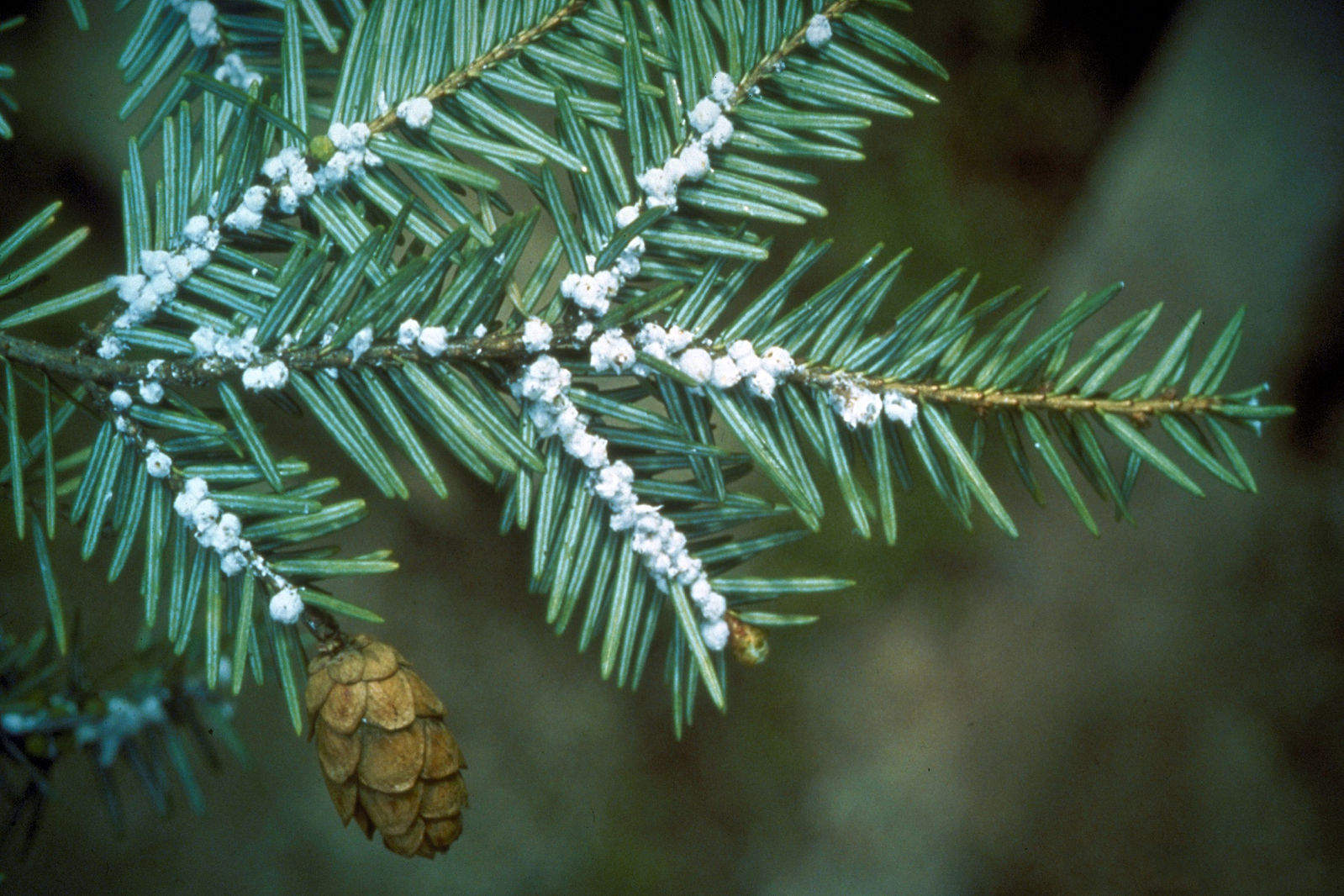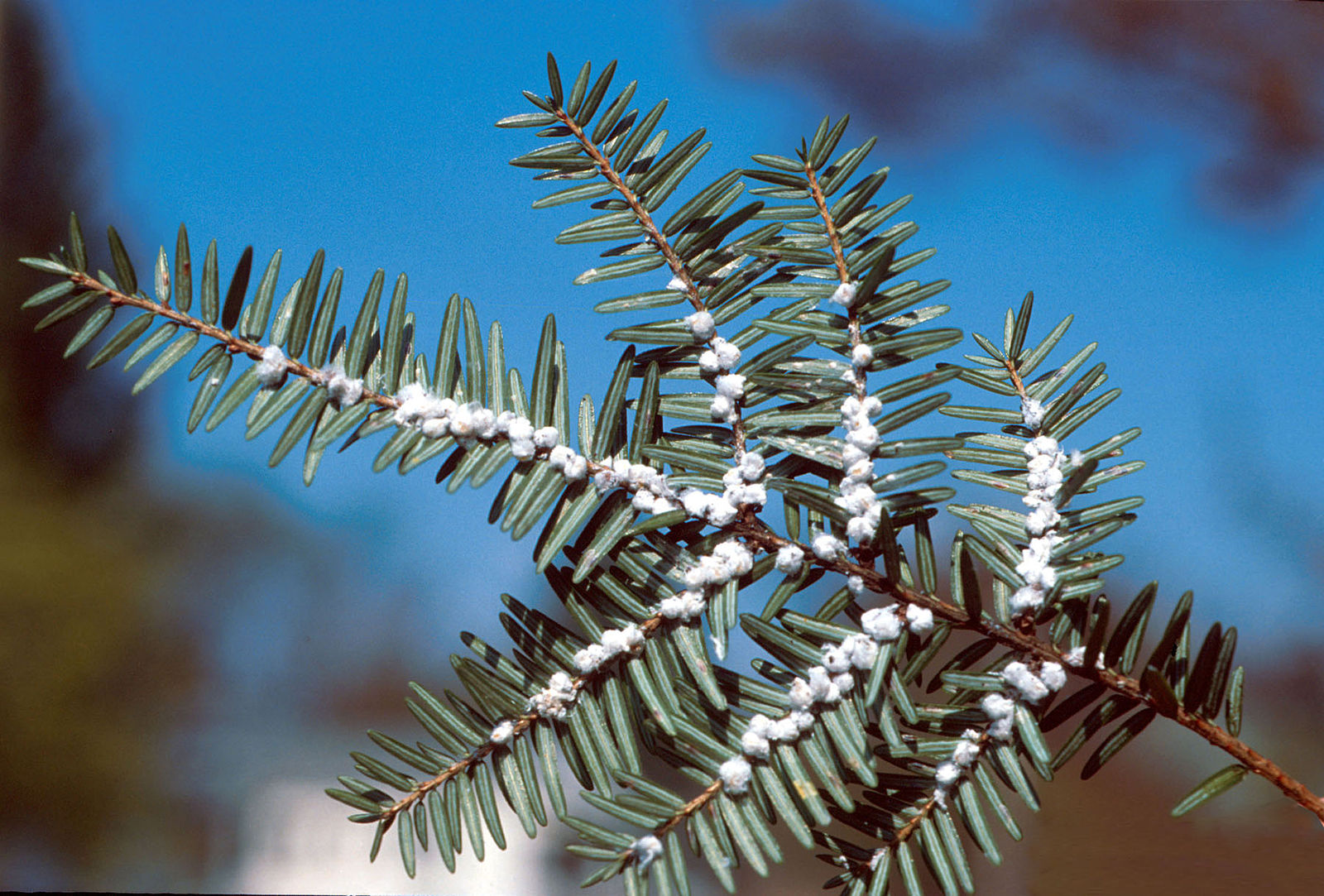hemlock monitoring
Check hemlock stands for woolly adelgid, and email a photo taken with your smartphone in each stand to adkhemlocks@gmail.com.
View the 2017-2018 monitoring map.
As you have likely heard, the Hemlock Woolly Adelgid (HWA) (Wikipedia. Google Images.) was detected in the Adirondacks for the first time, on Prospect Mountain near Lake George. With warmer winters, it is expected that HWA will begin spreading through the Adirondacks and could lead to the decline and death of hemlocks like what we’ve seen to the south. There are treatments available for HWA, but to be successful, infestations must be detected and treated early. A great resource on HWA in New York is the New York State Hemlock Initiative site.
The Adirondack Landowners Association would like to encourage more people to begin checking hemlocks for HWA, and make it as easy as possible to report observations. To participate, all you need is a GPS enabled smartphone or camera. The GPS on most newer phones works even when the phone is on airplane mode. The monitoring plan is simple:
- Examine undersides of hemlock branches near the tips from November to April. HWA frequently shows up first near areas frequented by people, and near water. Spend a few minutes checking a number of branches distributed through the stand.
- Take a picture or two with your GPS enabled smartphone (iPhone, Android, etc.) of the underside of a representative branch. If you find something unusual or notable, take a picture of that.
- Email your pictures to adkhemlocks@gmail.com. You can email the pictures at any time - while you're monitoring, or after you get back to cell service.
We’ll save and archive the images, and use the attached data to generate a spreadsheet that looks like this:
From the spreadsheet, we’ll generate a map showing the points where hemlocks were checked. Clicking on the points will bring up the data, and a link to the archived image. We expect that HWA will not be found initially. However, knowing that hemlocks are being checked and HWA is not found is very helpful.
Furthermore, other hemlock pests, such as the Elongate Hemlock Scale (EHS) are likely to be found, and knowing where they are and how heavy the infestations are helpful. Trees don’t typically die from one cause, but from multiple stresses.
A scale infestation near Long Lake, photographed in August 2017.
IMapInvasives INCORPORATION
In addition to being used for a standalone map, the data gathered will be provided to iMapInvasives, which is a comprehensive database of invasive species observations in New York. You can submit data directly to iMapInvasives, but it requires a number of additional steps to report observations. The easiest way to use iMapInvasives is the app.
Now all we need is for you to start checking hemlocks from November until April and emailing your pictures from your smartphone to adkhemlocks@gmail.com!




![By Nicholas A. Tonelli from Northeast Pennsylvania, USA (Hemlock Woolly Adelgid) [CC BY 2.0 (http://creativecommons.org/licenses/by/2.0)], via Wikimedia Commons](https://images.squarespace-cdn.com/content/v1/569e68071c1210e1d070c478/1508868886572-FHTC6MFC7JHEVVQPLACT/1600px-Hemlock_Woolly_Adelgid_%2831992247765%29+%281%29.jpg)


